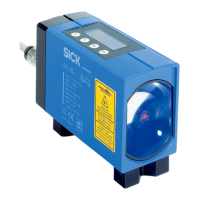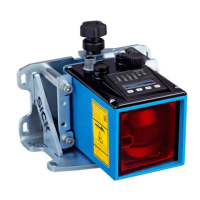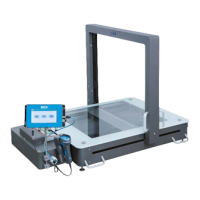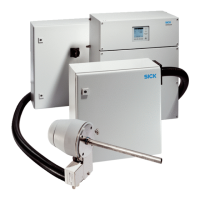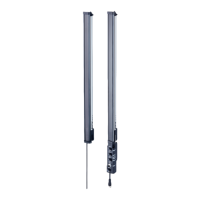Product Description
DUSTHUNTER T · Operating Instructions · 8012428 V 2.0 · © SICK MAIHAK GmbH Germany 15
Dust concentration:
Based on the Beer-Lambert law, the dust concentration is derived from the extinction as
follows:
Extinction is directly proportional to dust concentration for constant particle size and
uniform dust distribution.
Particle size, dust density and dust distribution during differing load states influence
transmission and extinction values and therefore the measuring system must be calibrated
using a gravimetric comparison measurement for exact dust concentration measurement.
The calibration coefficient determined can be entered directly in the measuring system as
c = cc2
· E² + cc1 · E + cc0
(Entry
→
p. 72, §4.4.7; standard factory setting: cc2 = 0, cc1 = 1, cc0 = 0).
2.1.2 Response time
The response time is the time required to attain 90% of the signal peak after a sudden
change in the measurement signal. It can be set anywhere between 1 and 600 s. As the
response time increases, transient measured value fluctuations and interruptions are
damped stronger and stronger which "smoothes out" the output signal.
Figure 2 Response time
c = = K · E k = extinction constant
L = 2x active measuring path (due to double beam path)
2.31 · E
k · L
10 20 30 40 50 60 70 80 90 100
Measured
value
in %
Measured value with response time
90% of the signal peak
Process change
Response time
t in s
100
98
96
94
92
90
88
86
84

